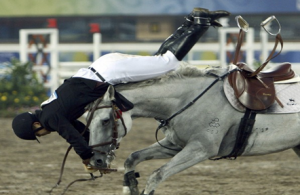News
Latest Lion Aid News
The consequences of domestication
Tuesday 7th December 2010
|
Homo sapiens have been around for about 200,000 years, and we originated in Africa. About 60,000 years ago our species left Africa to begin to colonize the world, a process that took remarkably little time given that our ancestors had no idea where they were going. Along the way they encountered some familiar animals like lions that had made the journey out of Africa before humans, but they also encountered new species. Some of these species became domesticated, and in fact form the core of all domestic animals around us today. Such domestication provided benefits and also brought unforeseen problems. Dogs first, rabbits last among companions It is not exactly known when the diversity of animals we now know as domesticated species first began to live with humans There is also evidence that cows, for example, underwent separate domestication in northern Africa and Asia. Nevertheless, we can hazard some pretty good guesses based on archaeological evidence. Not surprisingly, domestic dogs were the first, tamed from wolves about 17,000 years ago. Humans at that time were hunter-gatherers, and dogs would have quickly become invaluable companions to the wandering clans. With the advent of the first attempts at agriculture, about 12,000 years ago, the number of domesticated species increased rather rapidly, with sheep, pigs, goats, cows, chickens, and cats being added 8-10,000 years ago. Donkeys, horses, and camels were added to the menagerie about 6,000 years ago, and that was about it for the common farmyard animals. I did not forget rabbits – they were only domesticated in the Middle Ages - in1600 or so. Collaterals Domesticated animals have doubtless contributed greatly to our march to civilization, but they do come at a cost. In terms of domestic dogs, take a bite out of this: in the United States alone there were about 75 million dogs in 2008. Almost five million people there yearly suffer from dog bites, and one in six are serious enough to require hospitalisation. About 3,000 postal workers get bitten every year! Insurance paid $356.2 million in claims for dog bites in 2007, and the vast majority (77%) of biting dogs belong to a family member or friend of the person bitten. But name the animal that kills the most humans per year in the US? Bees. In Australia in 2008 the National Coroners Information System said more human fatalities were caused by horses (mostly by falling off them) than any other animal – and more than the combined total of sharks, crocodiles, and snakes. Diseases Over and above being bitten, mauled, trampled, trodden, crushed, kicked, gouged, horned, spindled and mutilated by our domestic friends, we also have accepted them into our midst at the risk of other aspects of our health. They have brought to us a variety of diseases. The official term is zoonoses – diseases communicable to humans via animals, and they are legion. Your dog can, and has, communicated rabies, Lyme disease, tick fever, sarcoptic mange, brucellosis, roundworm, tapeworm, and hookworm to owners. Your cat contributes those as well as toxoplasmosis and Bartonella – cat scratch fever. New influenza outbreaks every year are caused by the flu virus picking up bits and pieces of its new genome from ducks and pigs. Chickens give us Campylobacter and salmonella. Pigs provide trichinosis. Horses give us doses of rhinoviruses. Parrots transmit psittacosis. The hidden costs of milk and beef And cows? Now there is an interesting “friend” of ours. Cows are directly responsible for transferring to us the virus that causes measles – a mutation of a virus that causes rinderpest among cattle. Studies indicate that measles epidemics became a problem in the 11th and 12th Centuries among humans. Cows also transferred nice bacteria called tuberculosis and anthrax, and contributed to human deaths via prions – mad cow disease, Bovine spongiform encephalopathy, Creutzfeld-Jakob disease- 166 people dead in Britain by October 2009. Cows might also be involved in HIV/AIDS, albeit indirectly. It is now thought that Bovine immunodeficiency virus in Africa got into predators like lions and leopards – mutated to Feline immunodeficiency virus – from there mutated to Simian immunodeficiency virus when a leopard bit a monkey or a chimpanzee, and then finally mutated to Human immunodeficiency virus when our species ate a monkey (a common diet in western Africa). Domestication brings risks, but overall we seem willing to accept the collaterals. And we seem to have taken a break in trying to domesticate big animals, concentrating instead on birds, fish, and hamsters…
Picture:http://10minutesofbrilliance.com/wp-content/uploads/2010/08/falling_off-a-horse.jpg Tags: Domestication, dogs, diseases, zoonoses, Categories: Domesticating Animals |
Add a comment | Posted by Pieter Kat at 11:07




